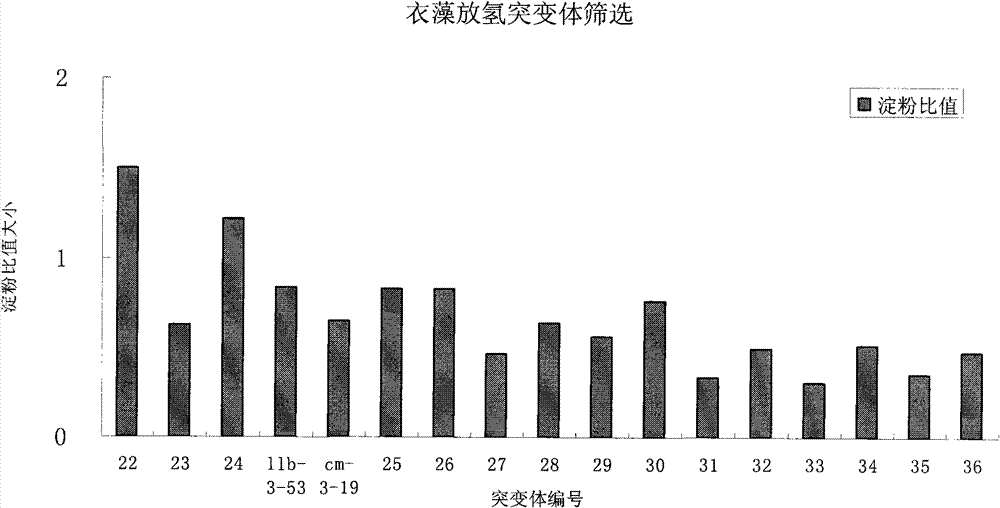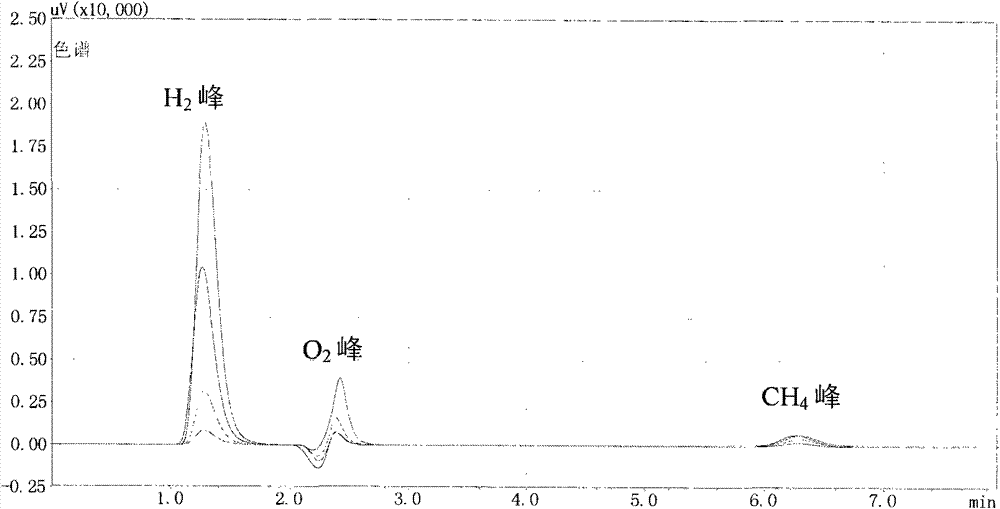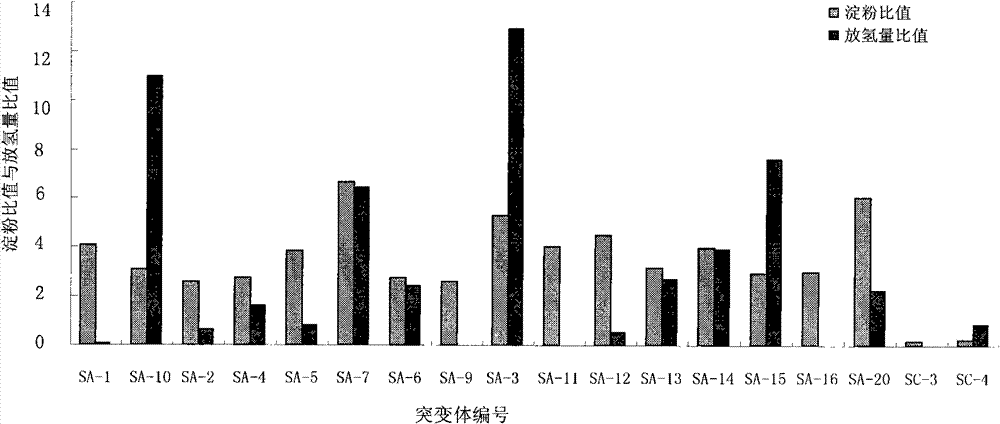Method for effectively screening out chlamydomonas hydrogen desorption mutant
A mutant, Chlamydomonas technology, applied in the field of screening Chlamydomonas hydrogen-release mutants, can solve problems such as unclear mechanism and regulation method, ineffective genetic transformation, and restrictions on the application of hydrogen production pathways by microalgae, so as to reduce the workload , the effect of improving efficiency
- Summary
- Abstract
- Description
- Claims
- Application Information
AI Technical Summary
Problems solved by technology
Method used
Image
Examples
Embodiment 1
[0022] 1. Plant material: Chlamydomonas reinhardtii (Chlamydomonas reinhardtii), algae species CC425 (arginine-deficient, Arg-) from Duke University algae library Chlamydomonas reinhardtii (Chlamy center, http: / / www.chlamy.org / ) were purchased; other mutants were obtained by our laboratory using T-DNA random insertion method.
[0023] 2. Plasmid: pJD67 plasmid was purchased from Duke University Chlamydomonas Center (Chlamy center, http: / / www.chlamy.org / ); The pJD67 plasmid is transformed from the commercialized pBluscript SK plasmid, with a full length of 11284bp, containing the gene of spermylsuccinate lyase and the gene of ampicillin resistance. When transforming algal strains, linearize with KpnI to improve the transformation efficiency. The sequence of pJD67 is sequence 1, and the structure diagram of pJD67 is as follows Figure 4 .
[0024] 3. Medium
[0025] 1) Normal TAP medium: NH 4 C1 0.4g / L; MgSO 4 ·7H 2 O 0.1g / L; CaCl 2 2H 2 O 0.05g / L; K 2 HPO 4 0.108g...
PUM
 Login to View More
Login to View More Abstract
Description
Claims
Application Information
 Login to View More
Login to View More - R&D
- Intellectual Property
- Life Sciences
- Materials
- Tech Scout
- Unparalleled Data Quality
- Higher Quality Content
- 60% Fewer Hallucinations
Browse by: Latest US Patents, China's latest patents, Technical Efficacy Thesaurus, Application Domain, Technology Topic, Popular Technical Reports.
© 2025 PatSnap. All rights reserved.Legal|Privacy policy|Modern Slavery Act Transparency Statement|Sitemap|About US| Contact US: help@patsnap.com



